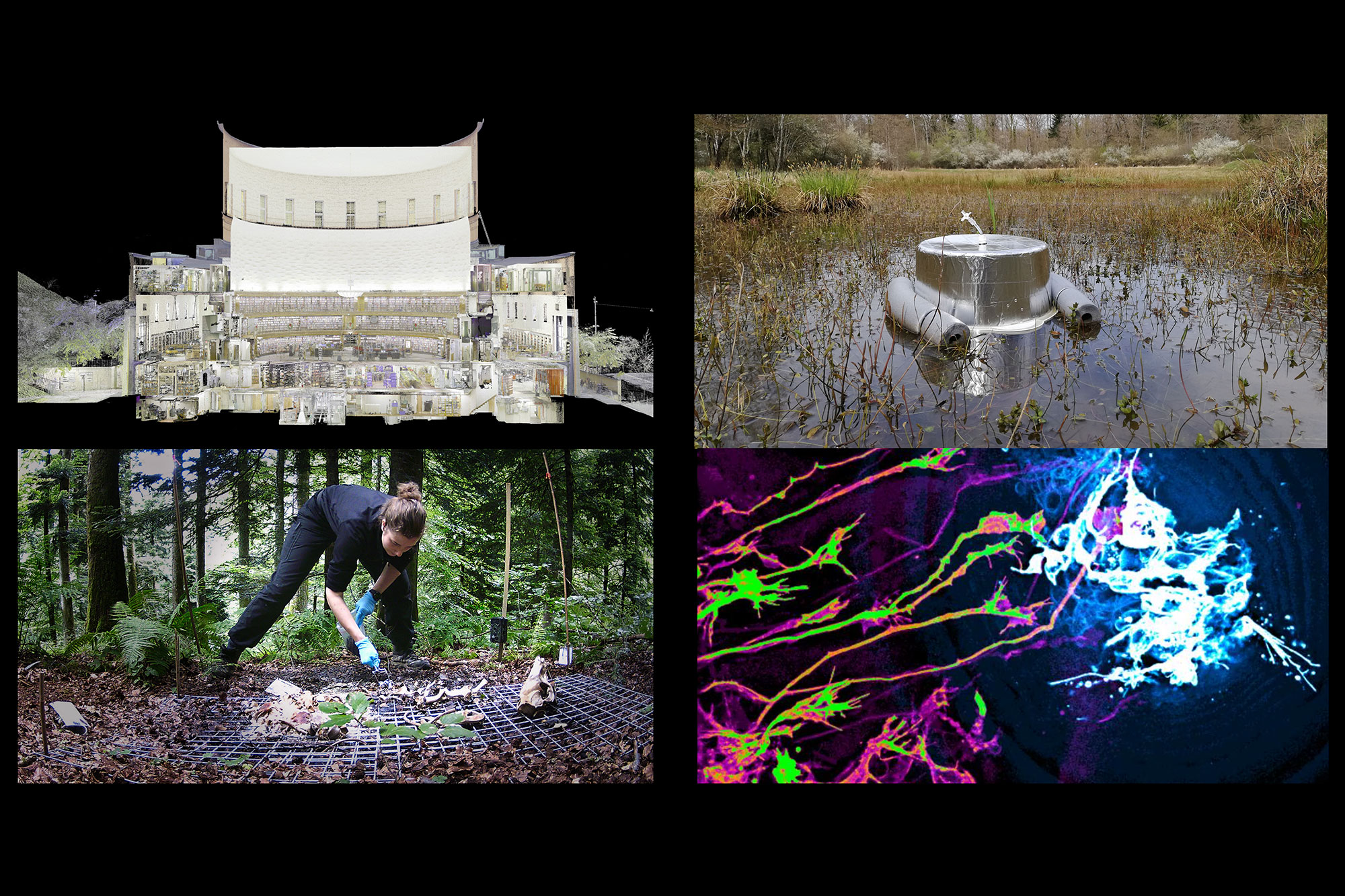Verblüffende Bilder aus dem Forschungsalltag
Der SNF-Wettbewerb für wissenschaftliche Bilder 2022 bietet ungewöhnliche Einblicke in die Schweizer Forschung. Eines der ausgezeichneten Werke stammt von Stephan Hochleitner, Postdoc in der Politischen Geographie. Im Mai 2022 werden sie an den Bieler Fototagen ausgestellt.
Creating a Glacier by Stephan Hochleithner, Department of Geography, UZH (CC BY-NC-ND 2.0)
Jury distinction in Category 3: Locations and instruments
Our approach towards so-called natural phenomena has changed from seeing nature and culture as separate, interconnected systems or even two distinct worlds towards seeking to understand multiple realities as co-constituted by human and natural entities alike. Part of the lower section of the Rhône Glacier in Valais is covered with tarp to preserve an ice-grotto from melting. The grotto has been a way for visitors to “experience” the glacier for over 150 years and is maintained by carving it into the ice over and over again using chainsaws. One of the persons doing this work can be seen at the bottom of the picture. The “glacier” is thus continuously being re-produced collectively through various spatio-temporal encounters, between those cutting the grotto, water, climate, rocks, etc., and those visiting the site.
Comment by the jury
The strong framing is reminiscent of the classical composition of early 20th century photography. It highlights the paradoxes of tourism in times of climate change, underlining how landscapes change through a combination of human activity and natural forces.
Die internationale Jury des SNF-Wettbewerbs für wissenschaftliche Bilder 2022 hat vier erste Preise und zehn Auszeichnungen vergeben. Insgesamt wurden dieses Jahr 334 Werke eingereicht. Sie alle bilden die enorme Vielfalt der Forschungswelt in der Schweiz ab, machen neugierig, werfen Fragen auf und faszinieren. Mehr als 2300 Bilder und Videos online abrufbarAlle Werke, die in den bisherigen Wettbewerben eingereicht wurden – über 2300 – sind in einer Online-Galerie auf Flickr abrufbar. Die Bilder ab 2018 können für nicht-kommerzielle Zwecke und von den Medien mit Creative-Commons-Lizenz verwendet werden. |
Communications

